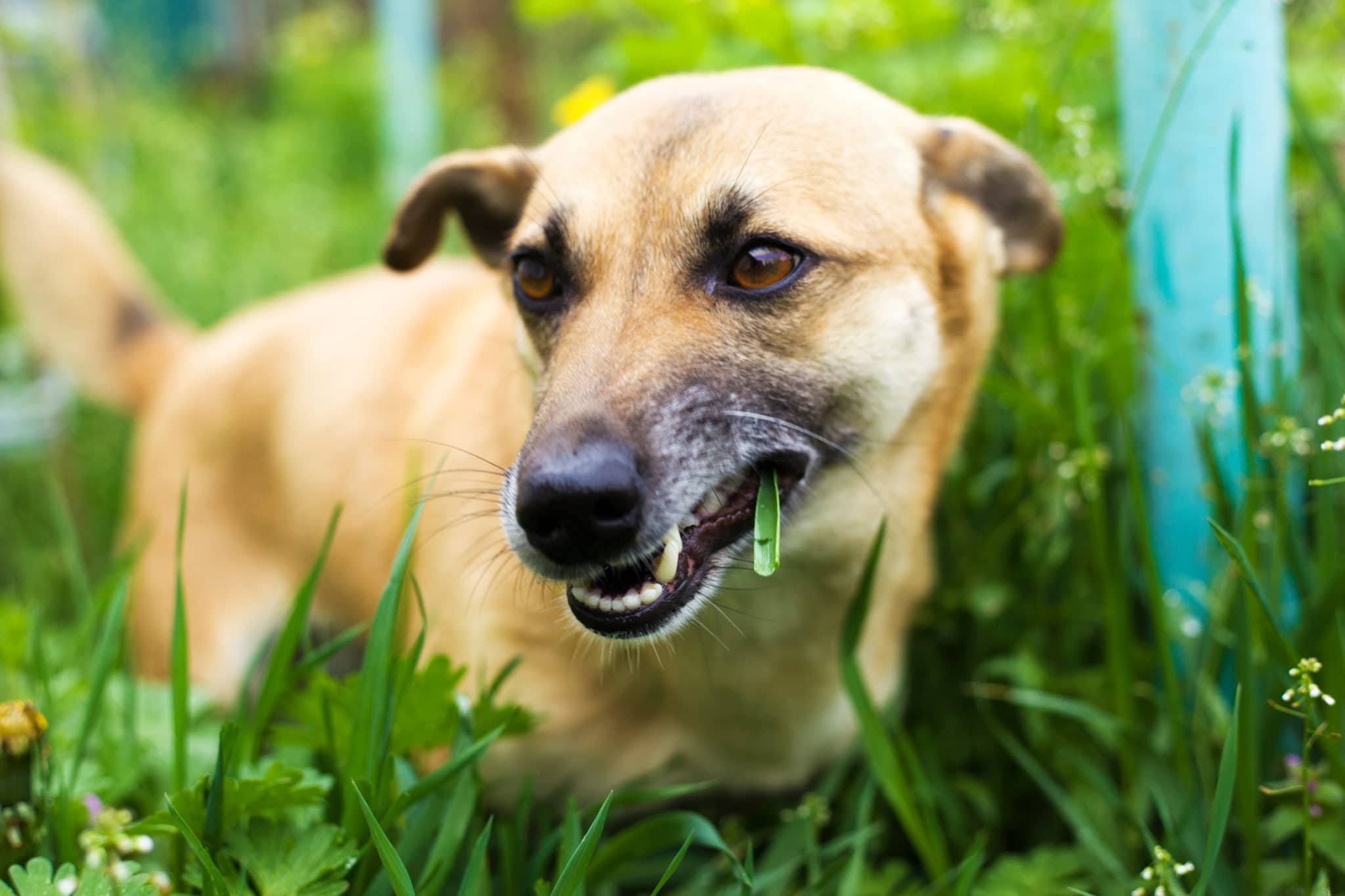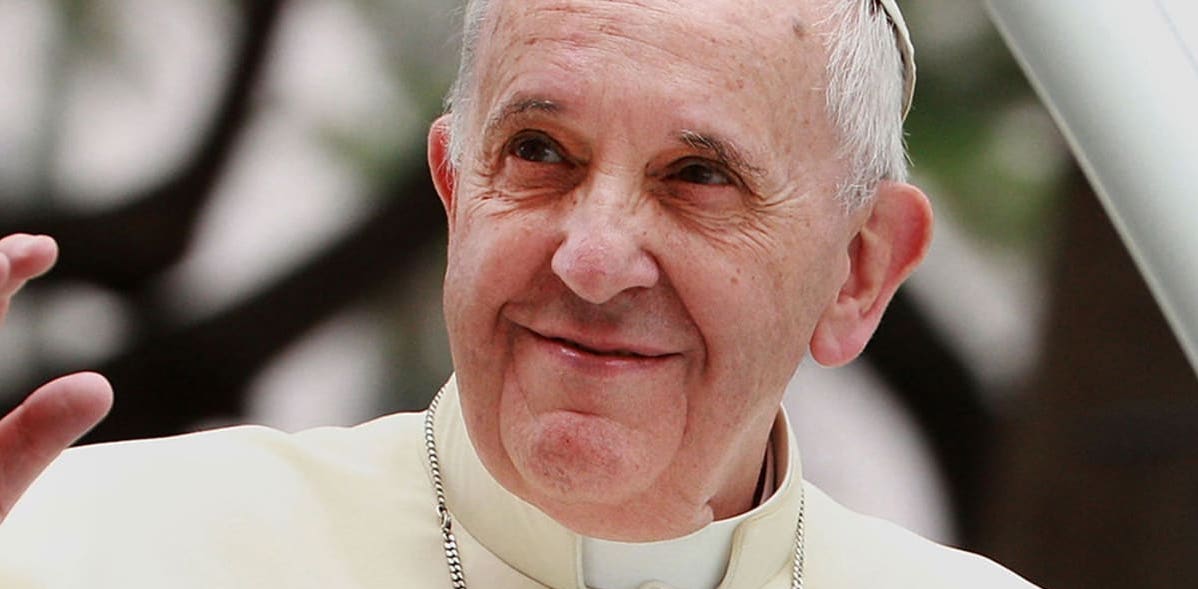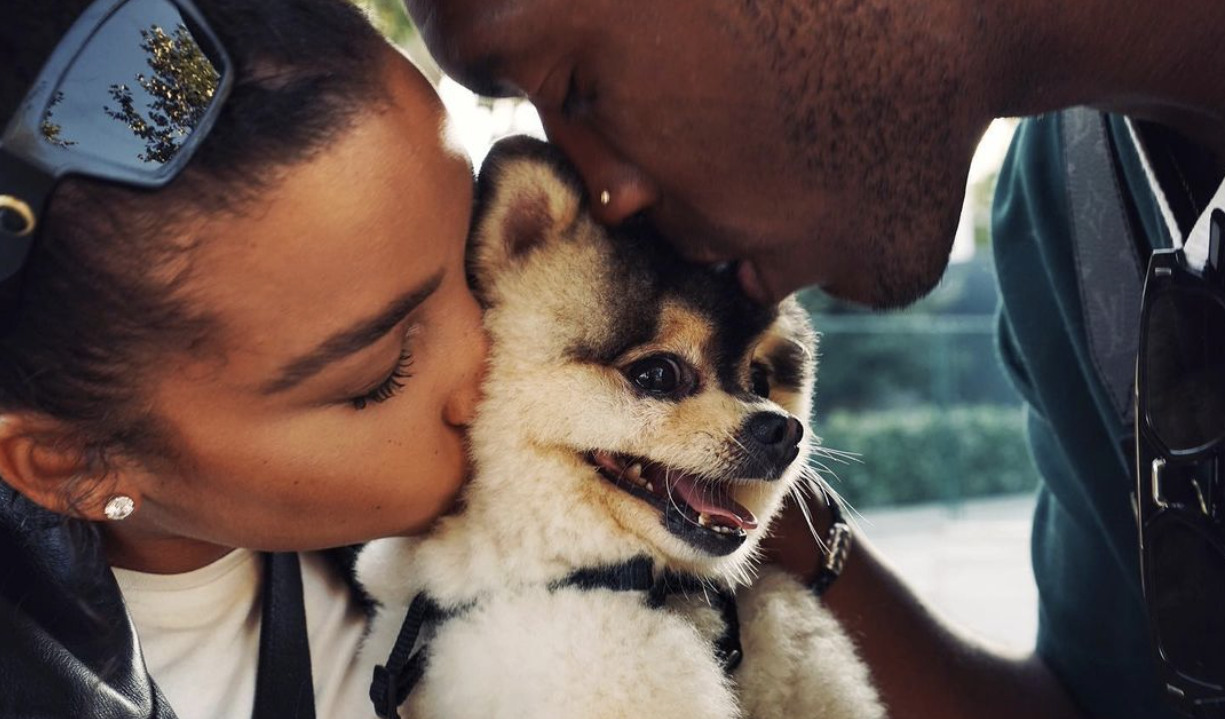Whether it be for a spay or neuter, the removal of a lump, or an emergency event, there could come a time when your pet may need surgery.
In this article, we’ll delve into what you can expect if your pet needs surgery and the steps you can take to ensure that everything goes off without a hitch.
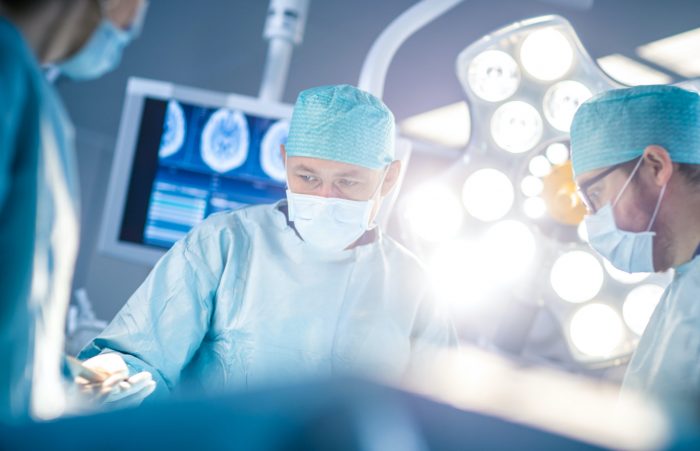
What to expect if your pet needs surgery
1. Your pet will be asked to arrive on an empty stomach
On the day of surgery, your veterinarian will likely request that your pet arrive on an empty stomach. The reason for this is to minimize the risk of your pet developing a condition called aspiration pneumonia.
Aspiration pneumonia is a type of lung infection that can result from accidentally inhaling stomach contents. It typically occurs secondary to vomiting or regurgitation. Pets can regurgitate during surgery because anesthetic medications can relax the mechanism that normally prevents it from occurring. Thankfully, the risk of aspiration pneumonia can be greatly reduced by fasting your pet prior to surgery.
Typically, an 8 to 12 hour fast is recommended. Withholding water is typically not necessary, but you should confirm this with your veterinarian prior to the procedure. And don’t be tempted to feed your pet before surgery just because he or she looks hungry or gives you the puppy eyes! Your pet will usually be allowed to eat after surgery and the consequences of aspiration pneumonia greatly outweigh those of a grumbly stomach or “hangry” pet.
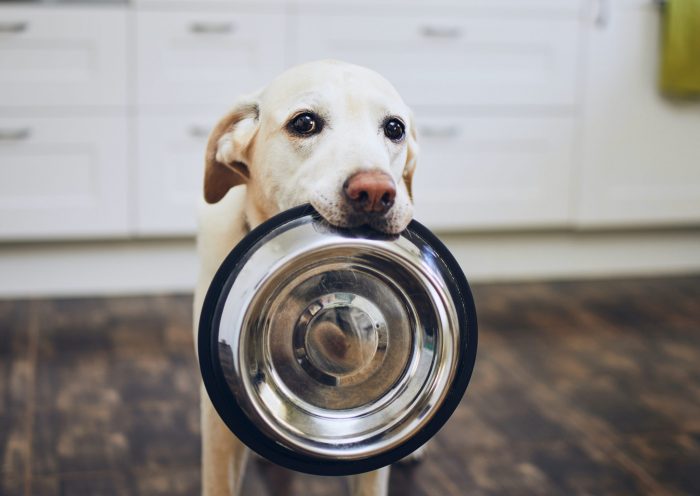
2. Your pet will be shaved
When you pick up your pet after surgery, expect that his or her fur will have been shaved. Since your pet’s fur can harbor bacteria and gets in the way of performing surgery, shaving the fur is necessary. A small area of fur may also be shaved on one or more of your pet’s limbs to allow an intravenous (IV) catheter to be placed.
You’ll be happy to hear, however, that any fur that is shaved will typically grow back within a few short weeks.
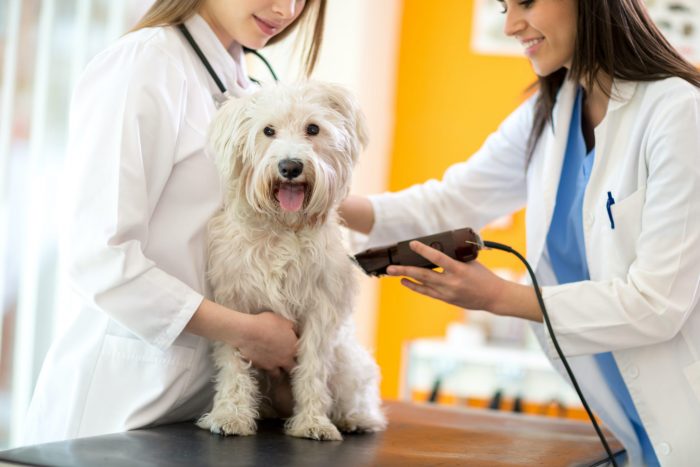
3. Your pet may have stitches
When a surgical incision is made, ultimately it needs to be closed back together. As such, don’t be surprised if your pet comes home with a few stitches or staples. In most cases, these sutures will be ready to be removed by your veterinarian in about two weeks.
It’s also not unusual for a veterinarian to stitch everything back together within or underneath the skin. If this is the case, all you will notice is a line where the incision was made. Any stitches used in this case will be hidden and dissolve on their own over the next few weeks.
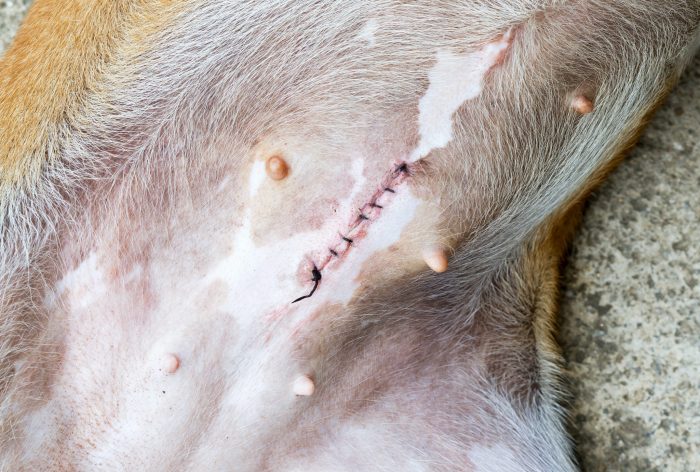
4. Your pet will go home with an E-collar and medication
Depending on the location of the surgical site, it is more than likely that your pet will need to wear an Elizabethan collar (E-collar) for approximately two weeks following surgery. This is to prevent him or her from disturbing the surgical site through biting or licking. It may also be helpful to have your pet wear a fitted shirt to cover and protect the surgical site.
Your pet will also likely be prescribed at least one medication; typically a pain reliever. This will help keep your pet comfortable as he or she recovers after surgery.
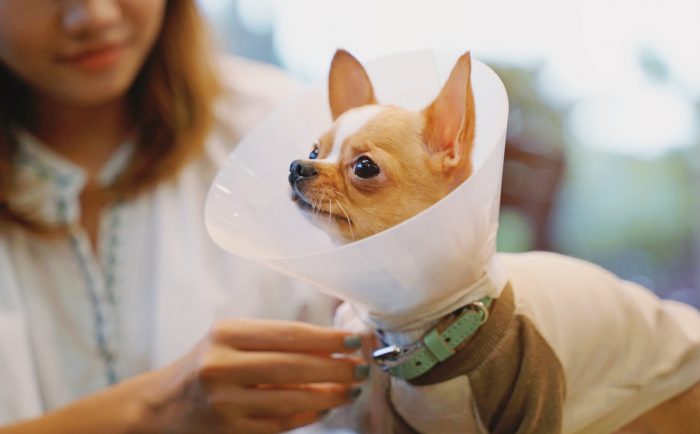
How to prepare your pet for surgery
1. Give your pet a bath
With surgery, cleanliness is key to preventing infections and other complications. If you have a dog, do your part by giving your pup a nice bath in preparation for surgery.
Cats, on the other hand, are natural groomers so a bath before surgery is typically not necessary.
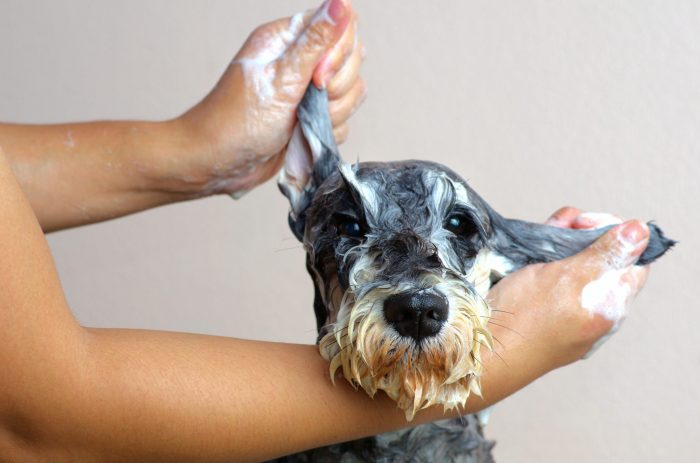
2. Mark your pet's lumps
If your pet needs to undergo surgery to have one or more masses removed, make sure to mark them at home with a marker. Doing this helps to keep track of your pet’s lumps in preparation for surgery. You’d be surprised how easily a lump can “go missing,” especially if it is small or if there are multiple lumps to keep track of!
Since you may find it difficult to write directly on your pet’s fur, feel free to shave the area first using a pair of clippers. If you don’t have any, your vet or groomer should be able to help.
Related article: What To Do If You Find A Lump On Your Pet
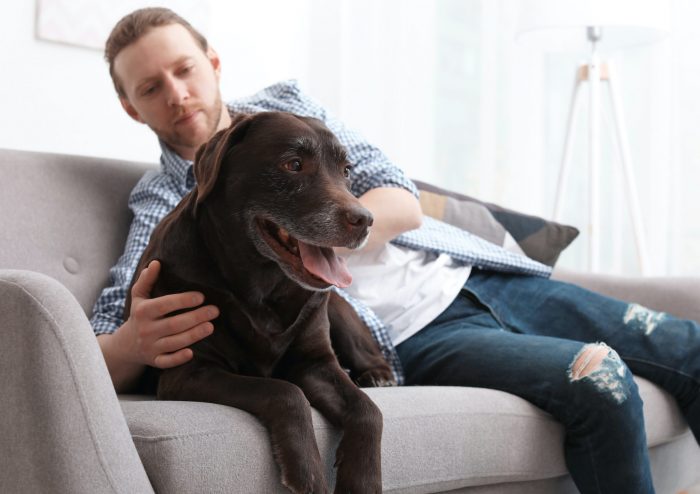
3. Prepare a place for your pet to recover
After surgery, it is important that your pet has a comfortable place to rest and recover. In most cases, a soft cozy bed is all you’ll need. With procedures that require strict rest or restricted movement after surgery, consider preparing a crate or other enclosed area for your pet to recover in.
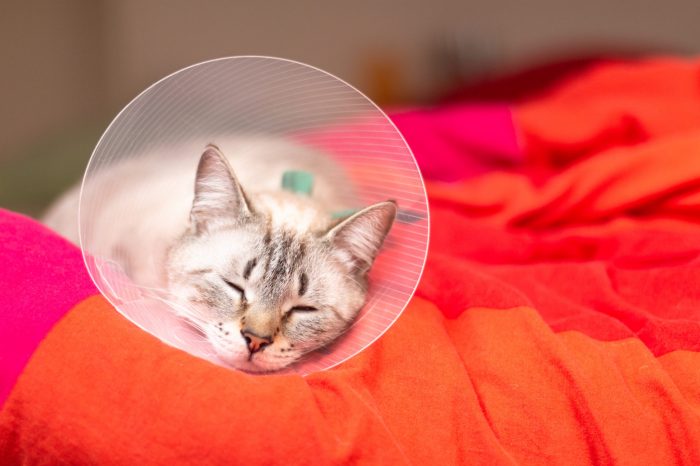
4. Understand your pet's aftercare instructions
Once your pet returns home, his or her care will now be in your hands. As such, it’s important to understand what to do, what not to do, and what to look out for as your pet recovers.
In general, exercise after surgery should be restricted to short walks (5-10 minutes) on leash for two weeks. This is because excessive activity may delay your pet’s healing process. Some surgeries may require exercise restriction for a longer period of time.
Next, it’s important that your pet wears the E-collar and/or a fitted covering at all times during his or her recovery. This is because any disturbance to the surgical site may compromise healing and even result in the need for additional surgeries!
Finally, as a general rule, if you notice anything potentially unusual or concerning during your pet’s recovery, make sure to contact your veterinarian right away.
Related article: Surgery Aftercare – Top 3 Red Flags To Look Out For
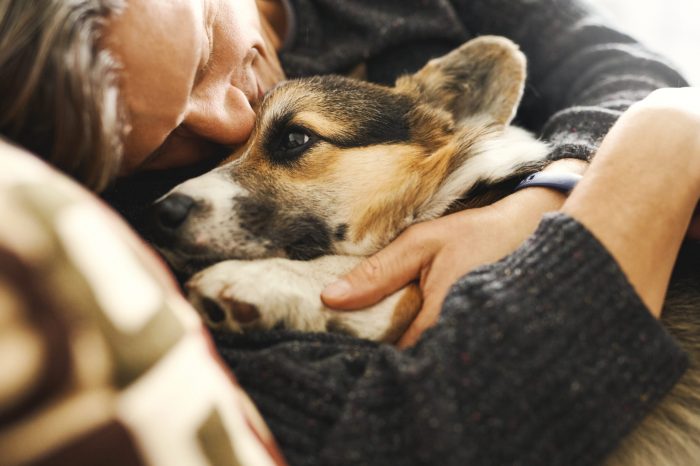
The thought of your pet needing surgery can be scary, but it doesn’t have to be! You now know what to expect if your pet ever needs surgery, and how to prepare accordingly to ensure the best outcome possible.

